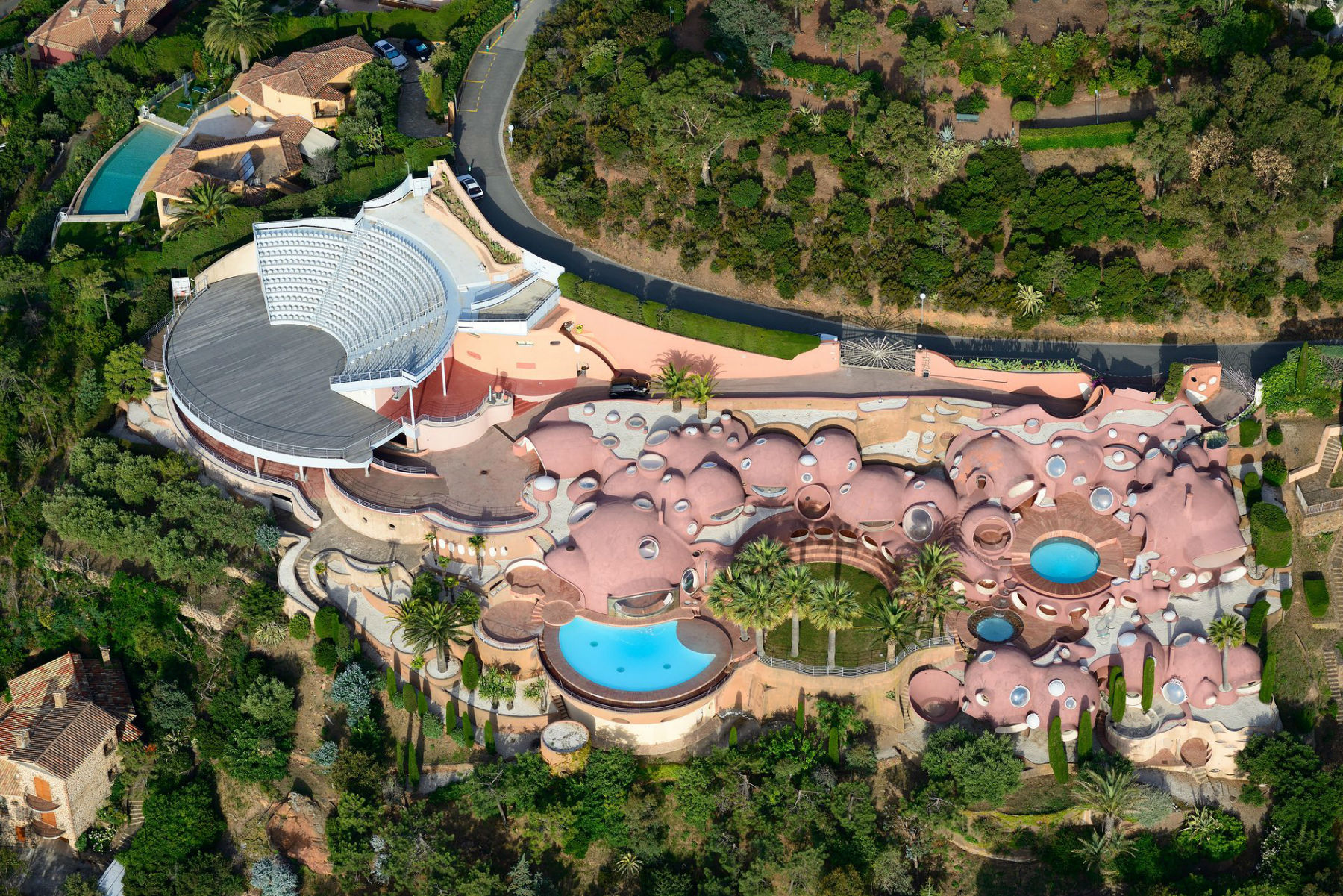Palace of Bubbles

Gliding through the volcanic hillside of Massif de L’Esterel lies the epitome of playful architecture – of spontaneous and joyful surprises. Known as the Palais Bulles or “Palace of Bubbles,” this 13,000-square feet home was designed by Hungarian architect Antti Lovag – the construction of which stretching between 1975 and 1989.
The organic design of this mansion mimicked humanity’s earliest dwellings in caves – which is then given a modern flair through its lavishly psychedelic décor, 500-person open amphitheater, an infinity pool, water ponds, and an eye-catching view of the Mediterranean Sea. Lovag’s interest in the complexity of spheroidal and spherical forms was reflected throughout its ten rooms, blowing out in convex skylights and windows, neither a straight line nor a right angle in sight.
Inside, transitions between domes were highlighted through multiple curves, to which the mansion is very well-known for. Openings made from circles, arches, and ovals are wrapped in pink plaster, gracefully dispersing across rounded, tunnel-like corridors. Vertically-opening doors of glass and steel create a flat window barrier, without depriving the interiors of the majestic glimpses of the sea and foliage. The multi-angular approach of its interiors allowed each opening to create a unique visual dialogue with natural lighting, each space morphing into different shapes depending on solar and lunar orientations.
Behind its unconventional form lies an equally unusual construction scheme. All spheres are built using lightweight rods and mesh, literally rolled around by Lovag and his clients wherever deemed appropriate. Concrete is then poured around these spherical frames, eventually forming these clusters of pink lava bubbles.
Despite Lovag’s eminent passion for understanding both architecture and the human body that affects it, the architect is not known to have a long list of clients. This is highly likely due to three design philosophies he continues to live by – he does not know what it will look like, he does not know when it will be completed, and he does not know how much it will cost. Despite his ethical dilemmas, the architect, at 90 years old, continues to study the nature of Man behind his circular field of vision.
- France
- Antti Lovag
- https://www.palaisbulles.com/explore.php
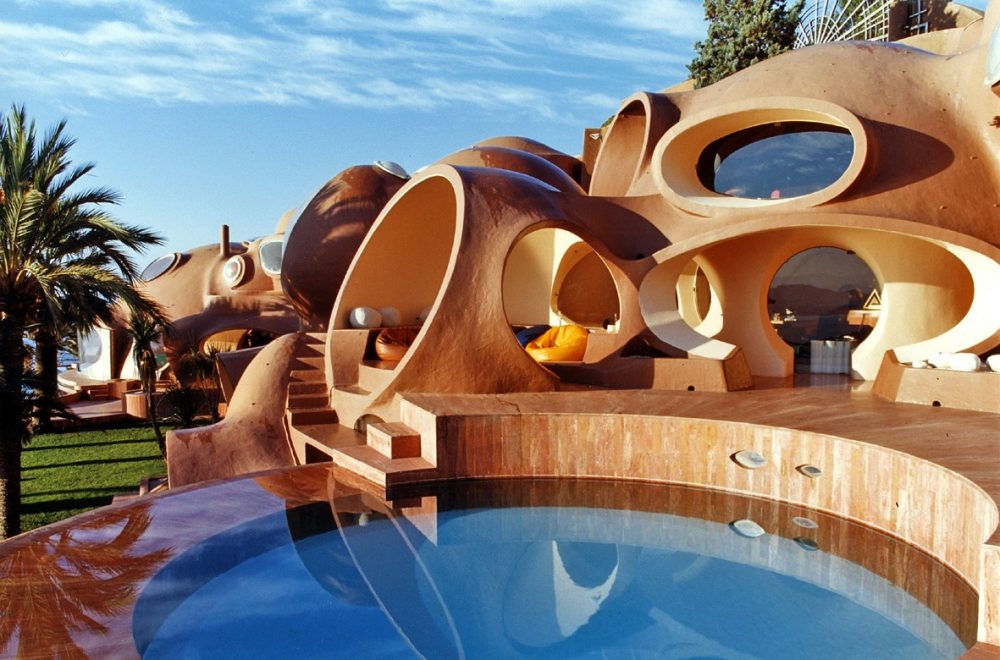

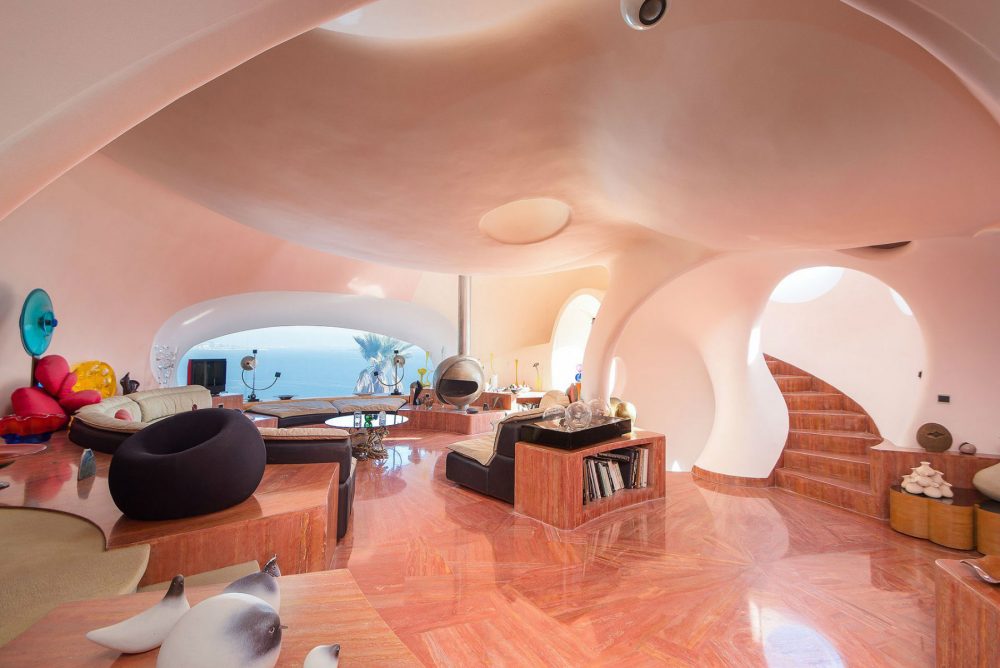

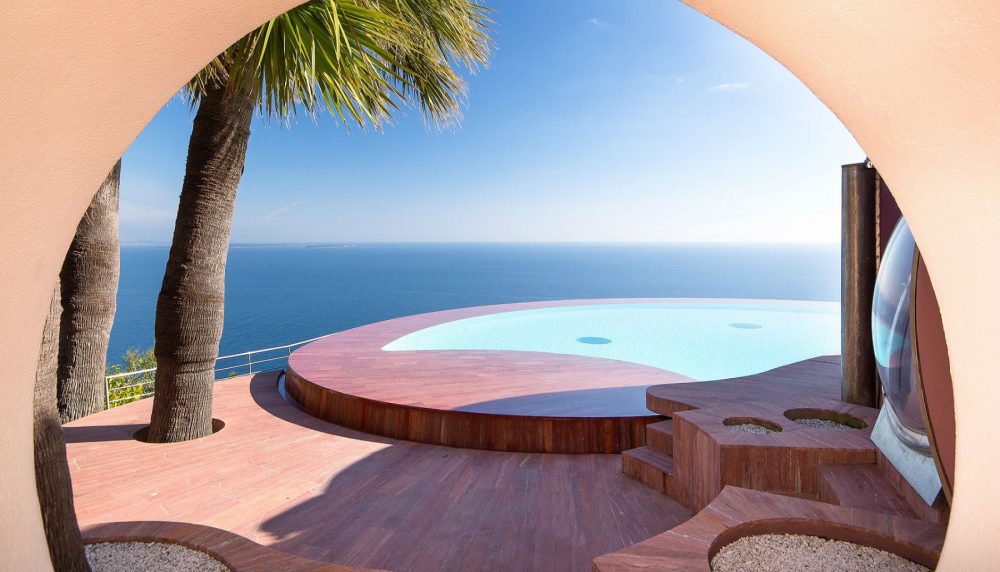
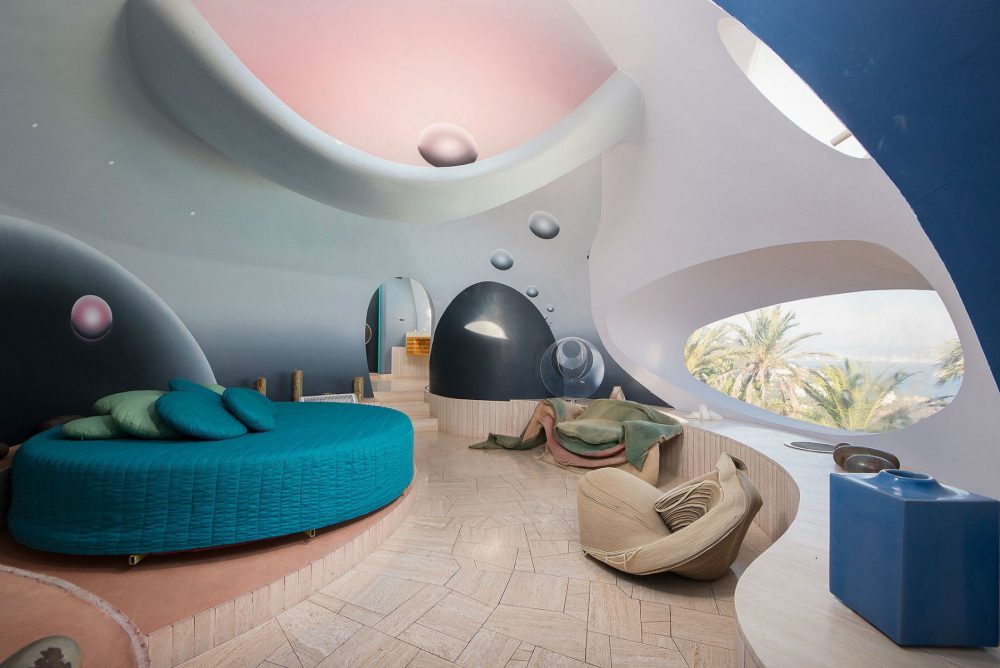


Category Residential
